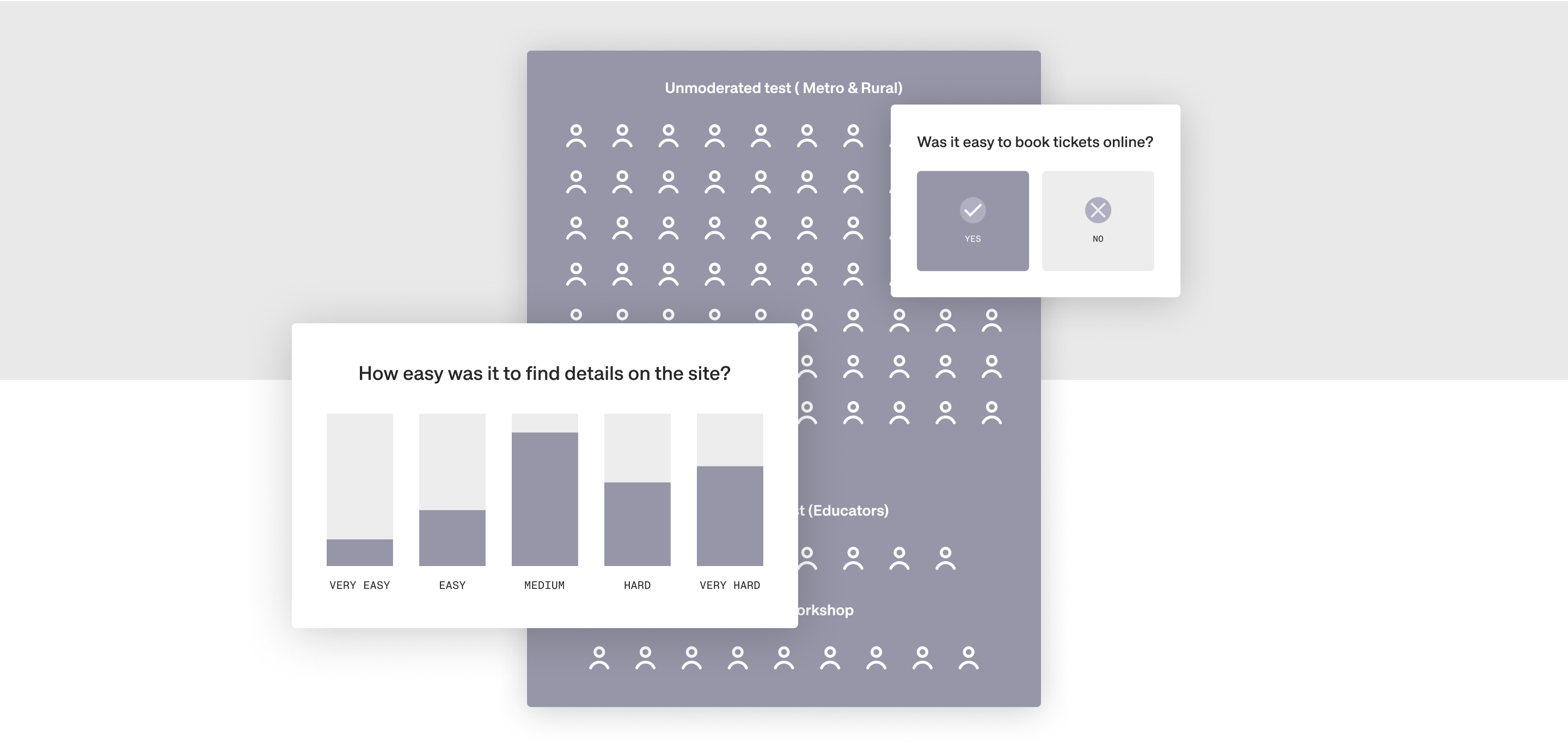Making art more accessible for all
National Gallery of Australia
Making art more accessible for all
National Gallery of Australia
The National Gallery of Australia is home to the largest art collection in the country, with over 155,000 works of international and Australian art. With such a rich collection, the National Gallery aims to engage as diverse an audience as possible with art, and that means making sure that every visitor is able to experience art in ways that are accessible and meaningful to them.
Increasing participation through improved accessibility

A key aim of the Gallery is to reach and connect with the widest possible audience, whether online, on site or on tour. We partnered with the National Gallery of Australia (the Gallery) to understand how well their website was contributing to that goal. The Gallery wanted to ensure their approach to future development phases of the website would be user-led and engaged Pollen to evaluate the website against needs and experiences of key audience groups.
Diverse representation in user testing

Our challenge was to evaluate and uncover potential barriers that certain audience types are facing when it comes to accessing content, services and works of art online. The three key audiences we focused on for this engagement were educators, general visitors across Australia, and those with accessibility needs.
The Pollen team also actively involved essential internal stakeholders from the Gallery, who were responsible for overseeing the primary audience segments. In addition to this, we also conducted an in-depth analysis and interpretation of website analytics data to gain valuable insights.
Uncovering lived experiences through varied research activities
To evaluate the current user experience across these three audience types, we used a variety of research activities. These activities included unmoderated testing to reach national audiences and educators, as well as an on-site workshop at The National Gallery of Australia for users with accessibility needs.
The unmoderated test included a series of tasks and questions, tailored to each audience type, to match real time experiences. Those with accessibility needs were able to participate in conversation, drawing or writing in a face-to-face workshop hosted at The National Gallery of Australia.

During the evaluation process, we identified various sections of the website that created obstacles for users seeking to access content, services, and works of art. Additionally, we gained insight into their desires and expectations for an optimal experience, with a particular focus on addressing the needs of individuals with accessibility requirements.
Prioritising next steps by evaluating impact on audience
We took our learnings and insights and compiled an extensive report encompassing our methodology, goals, workflow, significant observations, in-depth findings, analysis of analytic data, recommendations, and an appendix containing all project artefacts.

The recommendations we generated from the evaluation were then assessed based on their impact on each audience type, allowing the Gallery to prioritise them accordingly. These recommendations have since been actively added to a prioritised feature backlog for future website updates, following a planned accessibility audit of the site.

Everyone benefits from greater accessibility and inclusivity
By implementing our recommendations, the Gallery will be able to enhance the website experience for not only these three key audiences, but also more broadly across all visitors. By placing a strong emphasis on accessibility, the Gallery can provide enhanced and inclusive art experiences for everyone, however they choose to connect and engage.
